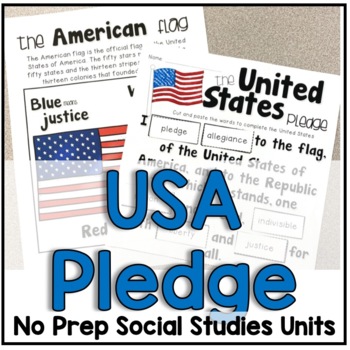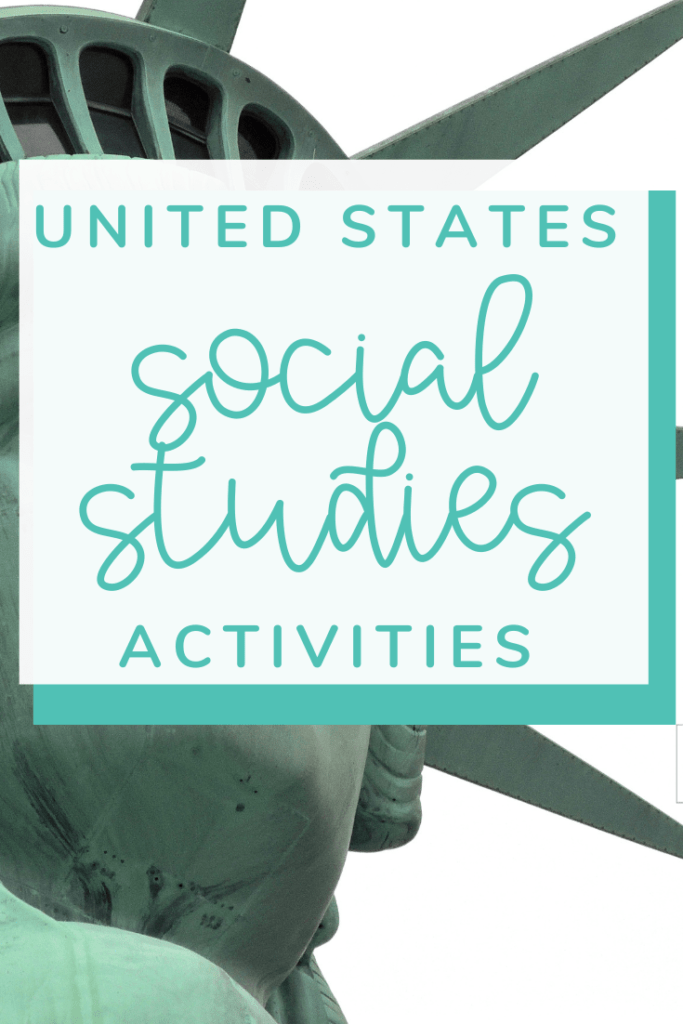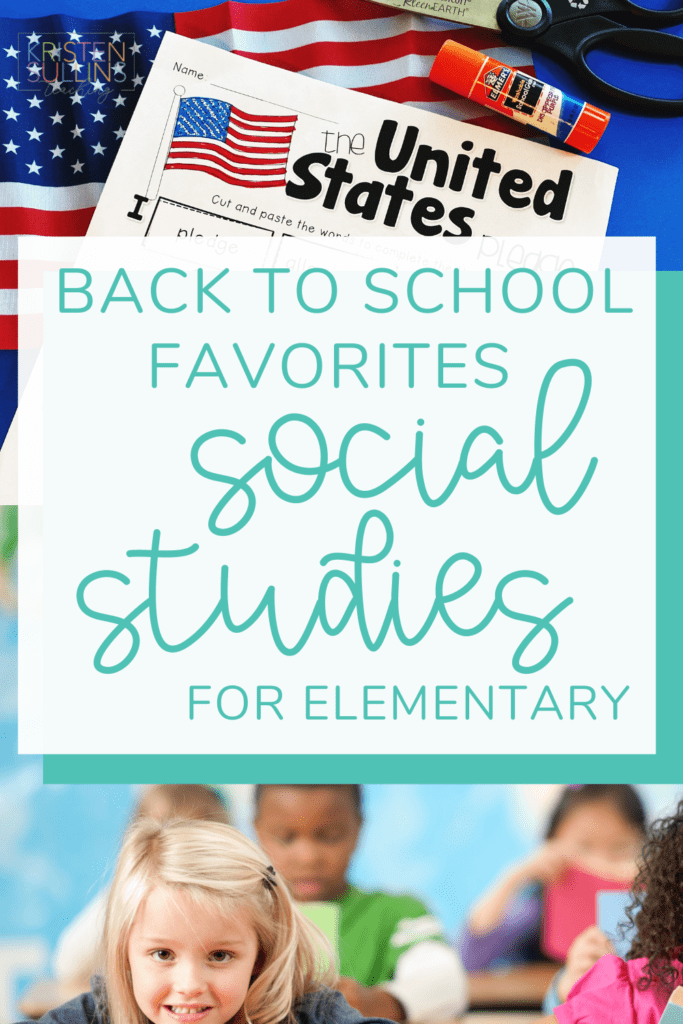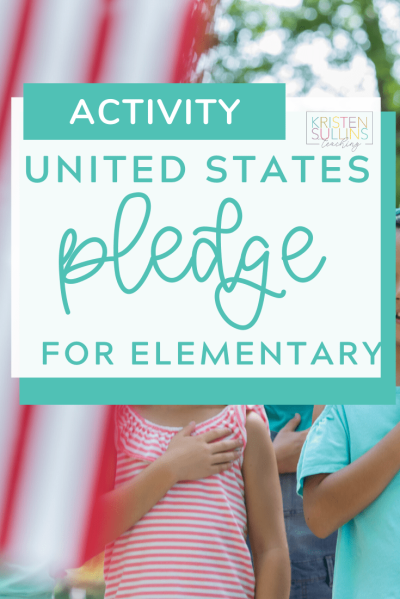Every first grade student recites the Pledge of Allegiance to the United States flag each and every day, but do they really know what it means?
Even as an adult, I catch myself reciting the pledge out of habit without really thinking about what the words mean!
In fact, most first graders can hardly pronounce the words in the pledge of allegiance, let alone tell you what they mean.
That’s what makes this such a fun, easy and engaging way to start off the year with your first grade students (and, if I’m being honest, it’s a great way to come back from Winter Break as well, but we’ll talk about that later!).

The History of the Pledge of Allegiance
Here’s a fun fact for you. The United States Pledge of Allegiance was “originally written in 1892 as a commemoration of the 400th anniversary of the discovery of America by Columbus; formally adopted in 1942 and last amended in 1956” (TEKS Resource System).
The pledge was first published in a magazine for young people in 1892. Francis Bellamy wrote the pledge while working for the magazine. Some of the pledge’s words have changed since then. The United States Congress recognized it as an official pledge to the flag in 1942. (Kids Britannica)
It was written to reflect American individualism and American freedom. When students recite the pledge each morning, it should remind them not only of their promise to dedicate themselves to our country, but also the promise our country has made to protect us as individuals.
The original version of the Pledge of Allegiance did not include the words “under God.” The phrase was officially adopted in 1954 at the insistence of President Dwight D. Eisenhower.
The Pledge of Allegiance is most often recited at public gatherings. It is also recited daily by students and staff in most public school districts.
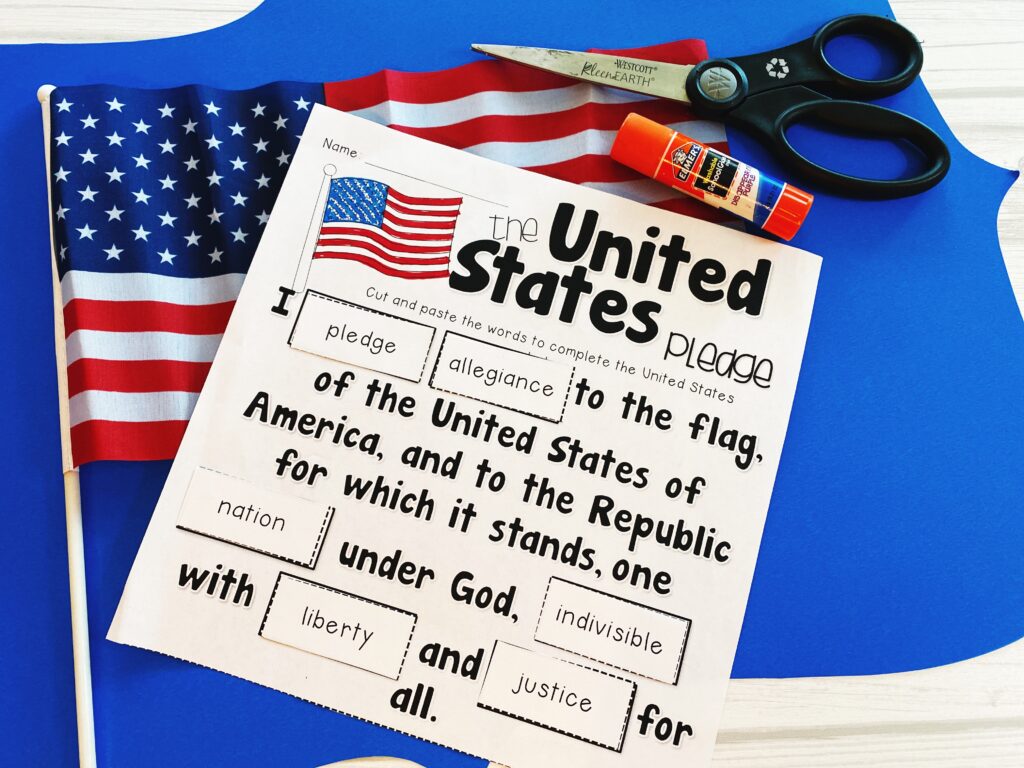
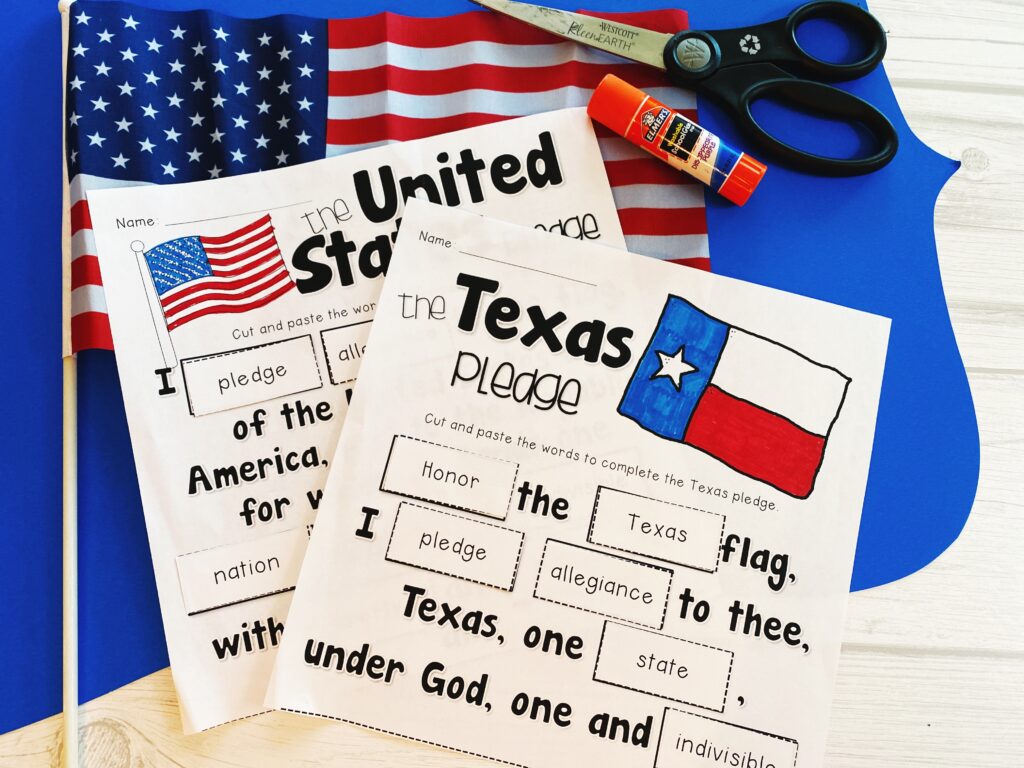
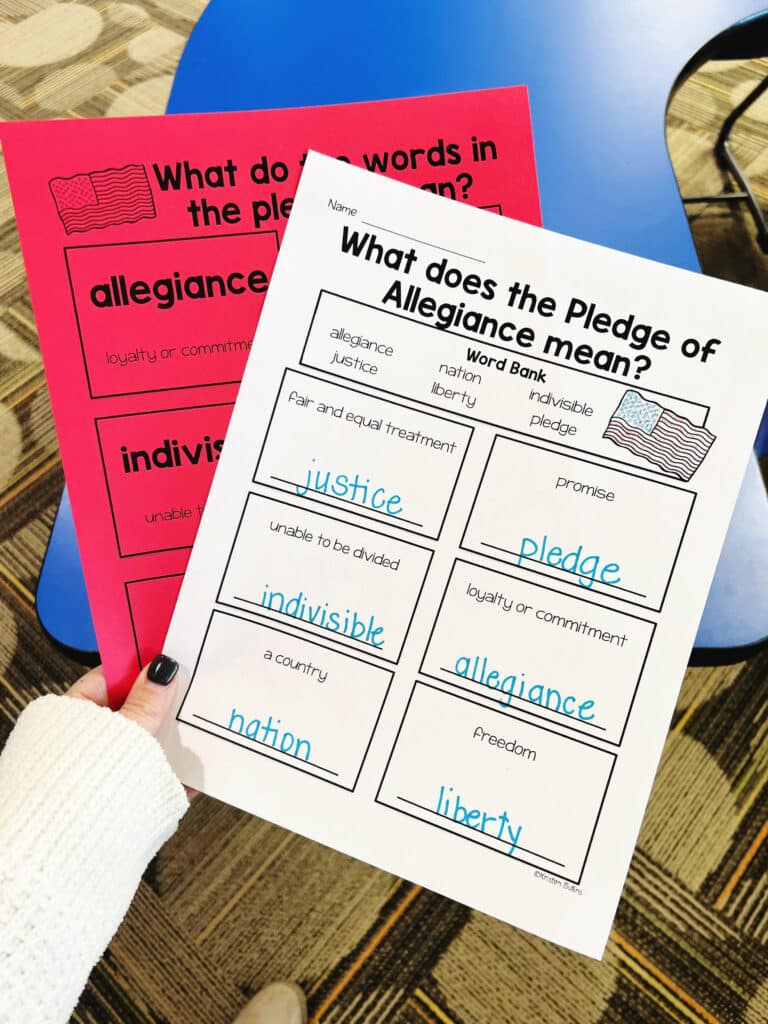
Pledge of Allegiance Cut and Paste Activity
Ok, learning the United States Pledge of Allegiance has always been and probably always will be one of the first social studies topics you teach as soon as you go back to school, well for first grade anyway. It’s one of your daily routines and it ties in very nicely with the review of school rules and expectations.
The pledge of allegiance is something that students recite every day, but do not understand half of the words they are speaking.
This cut and paste activity allows us to talk about the different words and phrases of the Pledge and what they really mean.
The vocabulary within the pledge of allegiance is so difficult, so I make sure that we discuss the harder words individually and we give lots of different examples of easier words we could use instead. For example, instead of saying I “pledge” allegiance, you could also say I “promise” allegiance. This really just makes this a more kid-friendly activity and captures more student engagement.
The vocabulary words we focus on when reviewing the pledge of allegiance are:
- Allegiance – loyalty or commitment
- Nation – a country
- Indivisible – unable to be divided
- Justice – fair and equal treatment
- Liberty – freedom
- Pledge – promise
It also gives us really good practice on how to correctly complete a cut and paste activity making this the perfect back to school Social Studies activity.
And yes, I go cut by cut with my first graders with this activity so I can give clear expectations for how I would like them to complete cut and paste activities for the rest of the year.
Every year, I use this Pledge of Allegiance cut and paste to remind my students of:
- the procedures for cutting small pieces
- how to properly use glue
- how to clean up your area when you are done
- what the words of the Pledge of Allegiance mean
Because let's be honest, you'll never be able to “fit it all in”. That's why it is so important to plan activities with your first graders that serve multiple purposes!
Mid-Year Pledge of Allegiance Activities
But I don’t only do these activities at the beginning of the year. I want you to visualize something with me…
It's midyear and your students are slowly but surely losing grip on their station expectations…
You, as their teacher, are losing your mind because you “know you've taught them better than that”…
So, what do you do?
It's easy… take time to re-establish your expectations!!
I know that midyear you have a lot of pressure on you to teach your standards and increase reading levels. But I also know that re-establishing routines and procedures is just as important midyear as it is at the beginning of the year.
Re-visiting this Pledge of Allegiance cut and paste is a great way to slow down and remind your first graders of the expectations you have set for them not only for the completion of their work, but how they behave while doing it.
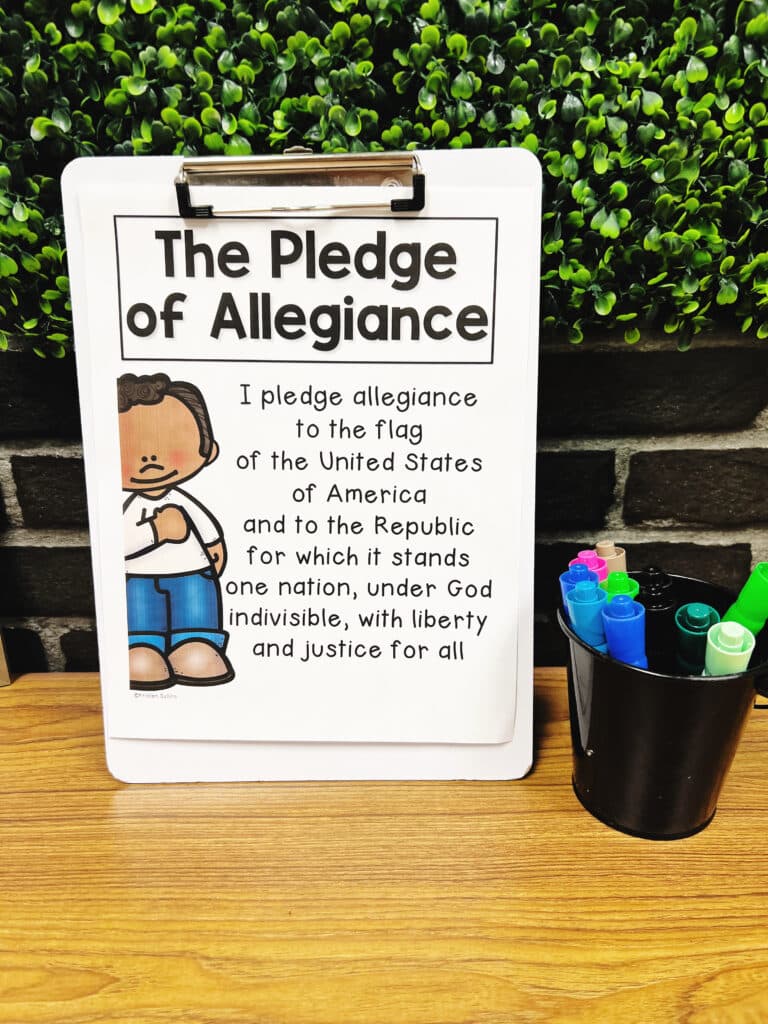
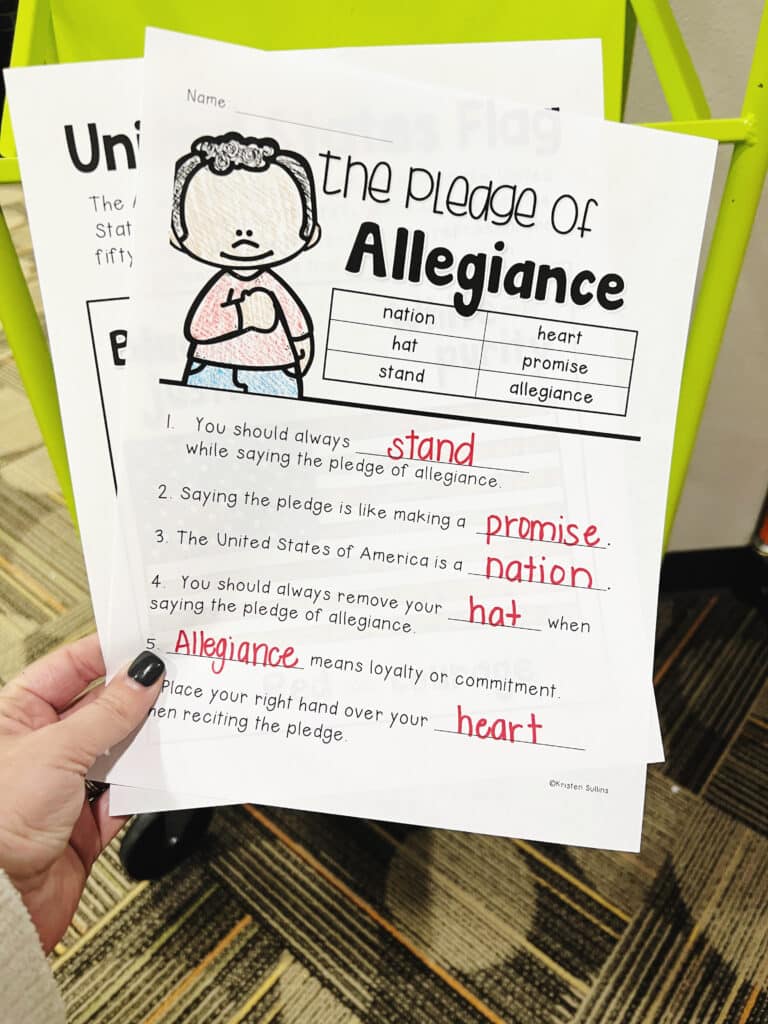
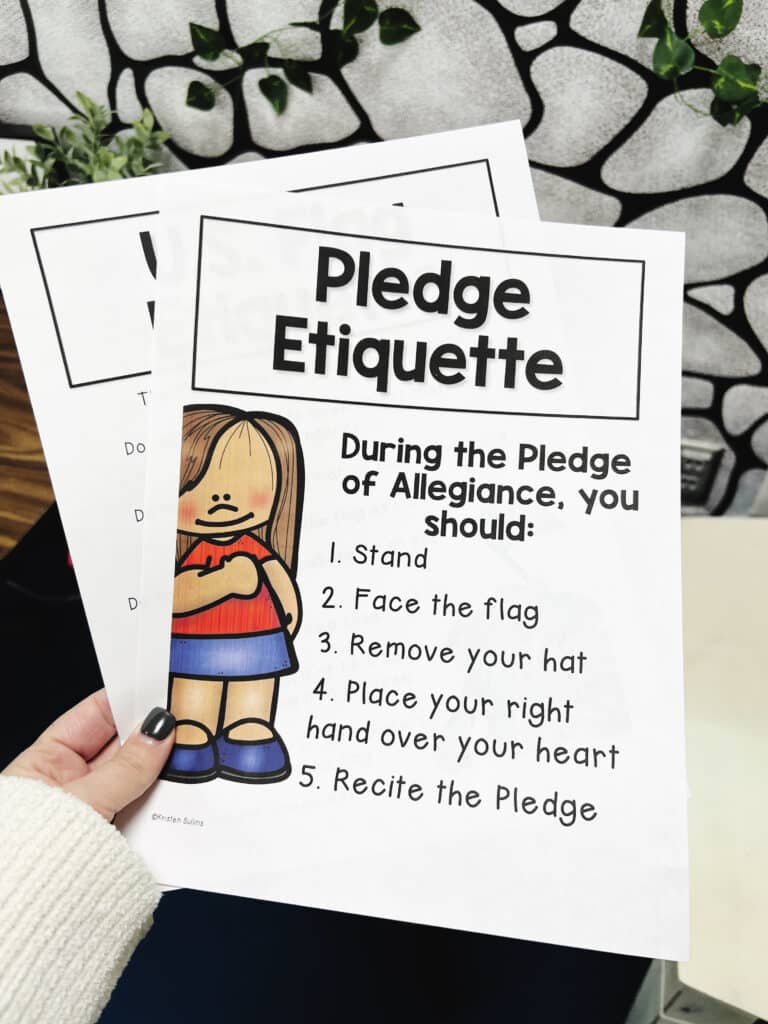
Pledge of Allegiance Etiquette
During this unit, we also talk about pledge etiquette (how to behave when reciting the pledge). I give my first grade students the following rules:
- Stand
- Face the Flag
- Remove your hat
- Place your right hand over your heart
- Recite the Pledge
United States Flag Facts
The flag is one of the most widely recognized symbols of the United States. It is easily recognized all across the world. I’ve found it to be very helpful for students to learn facts about the American flag at the same time they are learning about the Pledge of Allegiance because the two items/topics really go well together.
I recently updated my pledge cut and paste product to include more information about the United States flag. After years of teaching, I realized that just like the pledge, a lot of my students didn’t know that each design of the elements had meaning!
We started researching things like:
- What the colors mean
- What the stars and stripes mean
- Who created the design
- How many flags have flown over the US
- Nicknames for the US flag
- US Flag Etiquette
What the colors of the United States flag mean:
Red – Courage
Blue – Justice
White – Loyalty
Design Features:
13 Stripes – One for each original colony
50 Stars – One for each state
Nicknames:
Old Glory, The Stars and Stripes
Current Flag was adopted in 1960 and designed by Robert G. Heff
US Flag Etiquette:
- The flag should never touch the ground.
- Do not fly the flag upside down unless there is an emergency.
- Do not carry the flag flat or carry things in it.
- Do not use the flag as clothing.
- Do not store the flag where it can get dirty.
- Do not use it as a cover.
- Do not fasten it or tie it back. Always allow it to fall free.
- Do not draw on, or otherwise mark the flag
(Source: Veterans of Foreign Wars)
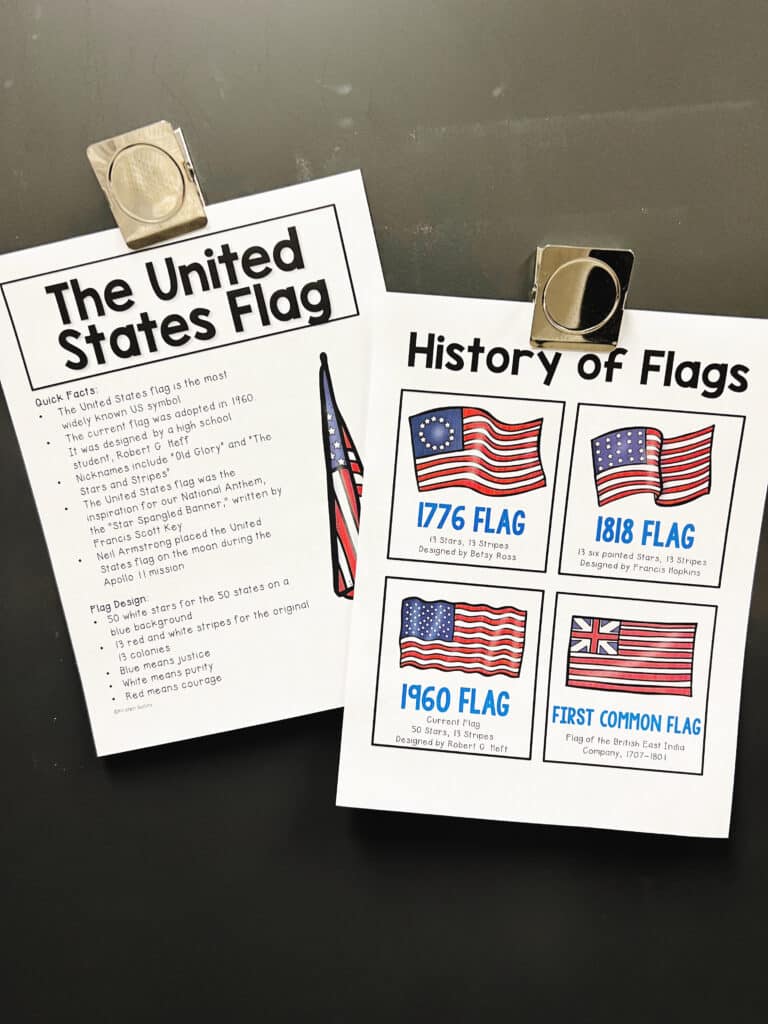

Pledge of Allegiance Activities for First Grade
This unit makes it easy to click, print and teach! Enjoy one easy download of everything your students need to learn the meaning of the Pledge of Allegiance and facts about the American flag, “Old Glory”.
The kid friendly cut and paste activity is a great resource for teaching students the sequence and meaning of the United States pledge!
Belinda G, says “This is a great resource that I use constantly. The cut and paste activity gives students the time to slow down to fully understand what is verbalized daily.”

